
Most trees have blossomed by now, though a handful more blossom each month, mostly because they are ornamentals and come from somewhere else. And some shrubs are still in bloom. Mostly though, I was looking at herbaceous plants growing from tubers, bulb-like corms, and perennial roots; some are considered noxious invasive plants, according to the Invasive Species Council of BC.
Let’s start there, because I’m seeing this invasive plant quite often: burdock, Arctium spp. Because of its ability to steal ground from native plants and because of its successful way of hitching a ride from one location to another, using its burrs, common burdock, Arctium minus, has become invasive in BC. These burrs can be really problematic to small creatures. They have also become the inspiration for Velcro, a fabric fastener that sticks hooks to loops.
Of course, the bee enjoying the nectar on this thistle-like flower head doesn’t care that burdock is invasive.
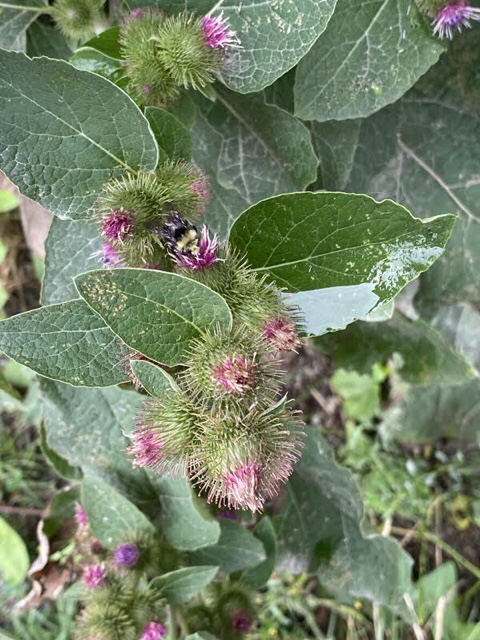
Another sun worshipper is stonecrop, scientifically known as Sedum telephium or Hylotelephium telephium. It is native to Eurasia, and is only a bit better behaved than burdock, doing really well in our hot droughty summer because of its succulent leaves and stems. Yet again, bees are enjoying the summer nectar.
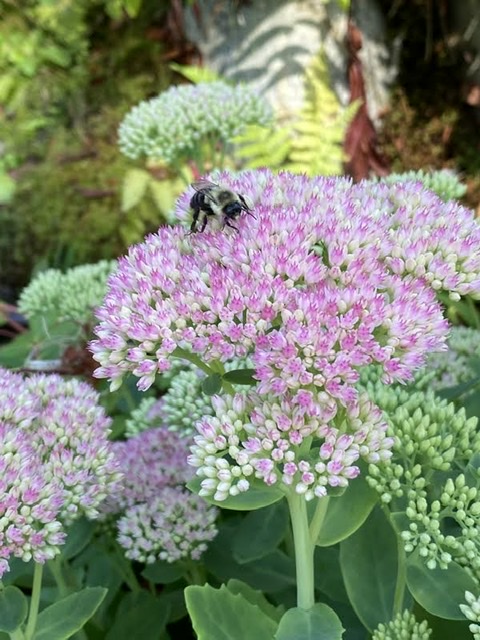
Then comes hollow Joe Pye weed, Eutrochium fistulosum. This is a perennial that bees and butterflies go crazy for and it’s as tall as me so I can get up close to photograph it. “Hollow” refers to the stems. And “Joe Pye” was a Mohican chief living in Stockbridge, Massachusetts, in the late 1700s and early 1800s. (1.) The flowers on this colourful herb (which has medicinal properties, according to Joe Pye) attract all the bumblebees from everywhere around.
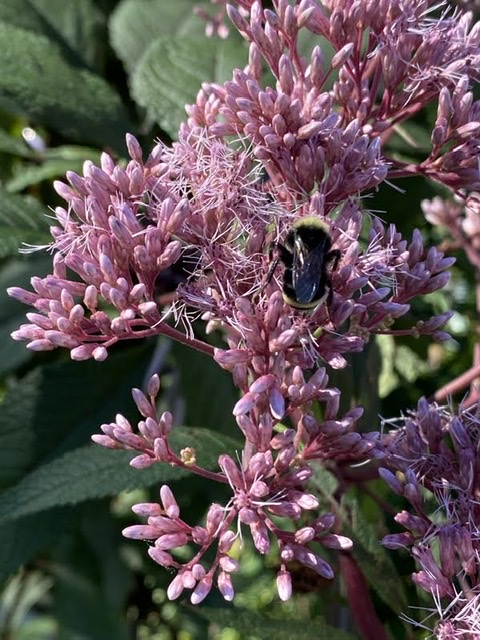
In fact, even though this goldenrod is growing nearby and it is native to the Pacific Northwest, the bees are ignoring it. This rhizomatous perennial is Canadian goldenrod, Solidago canadensis, a member of Asteraceae, the aster family.
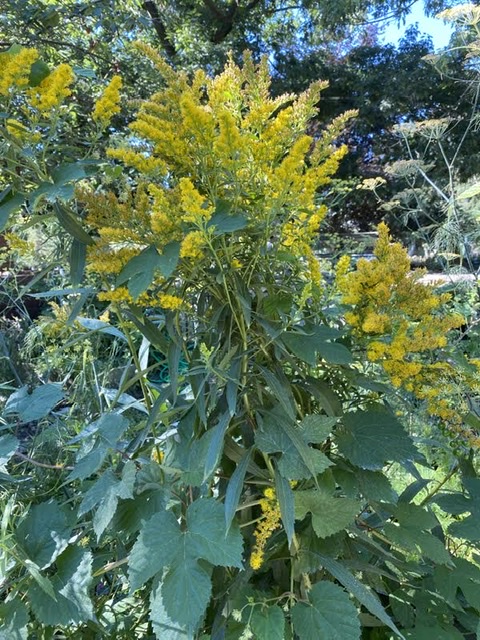
Petunias are everywhere, filling clay pots, window boxes, and hanging baskets. They come in every colour, plain, and in patterns, filling many a niche. 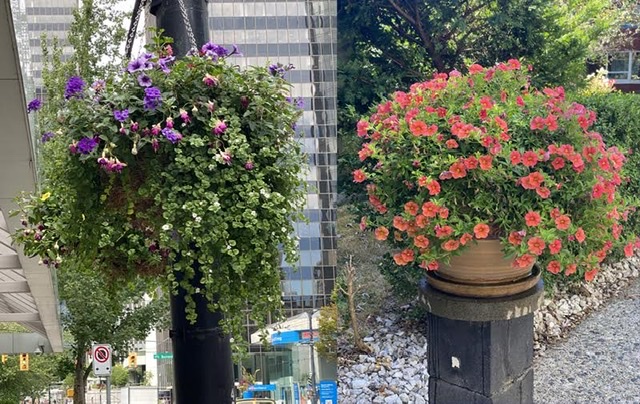
Here are three plants that, once established, will grow year after year: tall white gladioli, which grow from bulb-like corms; dinner-plate sized dahlias, which grow from tubers; and a close-up of the colossal flower of a cultivar of oakleaf hydrangea, which grows from the pruned down woody base (it’s actually a shrub).
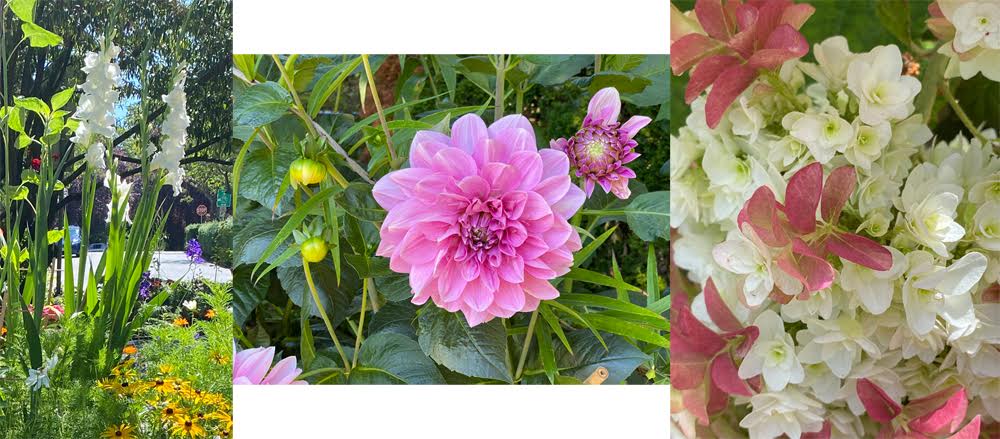
Climbing plants grow back from their woody base each year too. Take Madame Galen trumpet vine, Campsis x tagliabuana ‘Madame Galen’. This vine had many more flowers last year, but this year’s show is still worth seeking out. 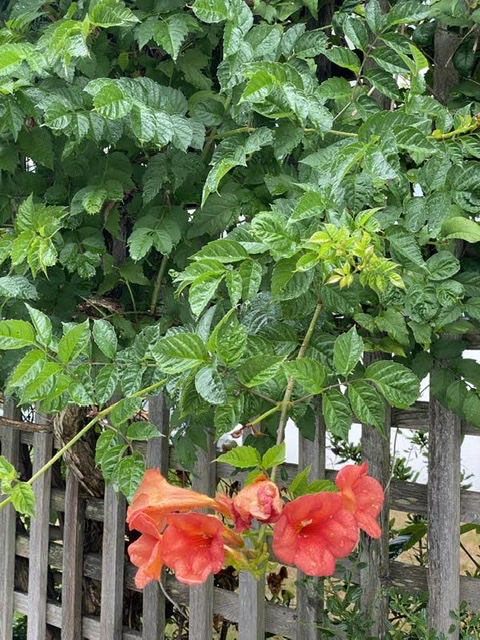
Red-osier dogwood is native to British Columbia. Mostly, its flowers are over now in August, though there is still one in this image. Loving water as it does, this plant is very content growing beside Lost Lagoon in Stanley Park.
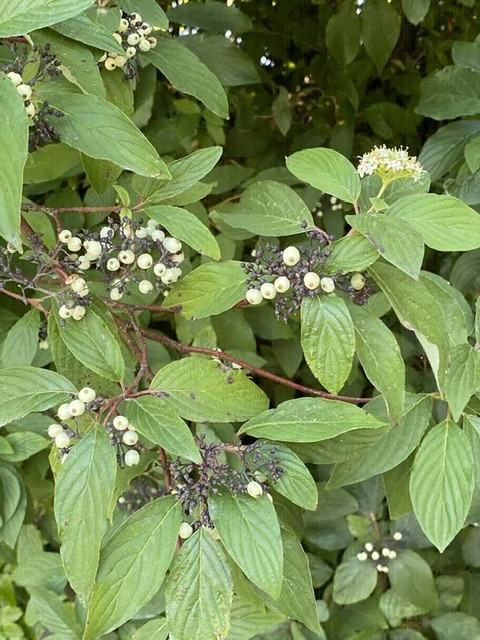
Gradually our sights have moved from close to the ground to beside our path and now we look further up to two angiosperms and one conifer in bloom. First comes Japanese angelica, Aralia elata. The plants that I know of in this family of Araliaceae, the ginseng family, frequently have compound leaves and great clusters of flowers that can become invasive fruit and seeds. Anyhow, Japanese angelica can be a charming, late-blooming tree. The flowers are light green and are at the tops of each branch.
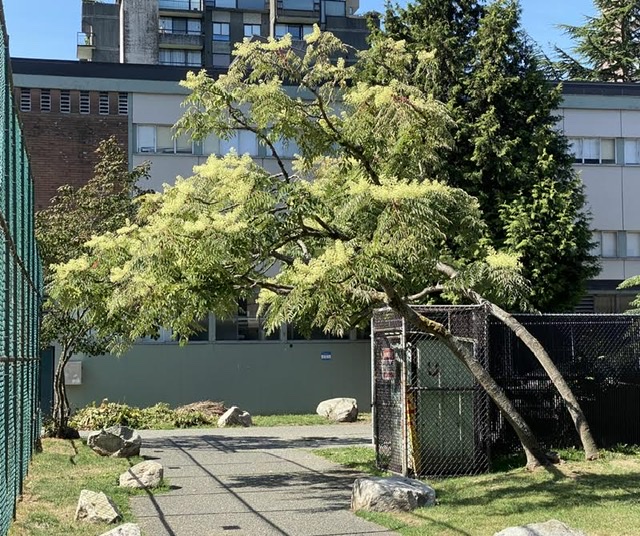
Next is hardy mimosa, Albizia julibrissin, with its fuzzy pink flowers, fuzzy from so many protruding stamens. This tree has compound leaves as well, actually these are bipinnately compound. It is native from Iran to central China. Its blossoming period is not long, so it’s always a pleasure to come across a blooming hardy mimosa.
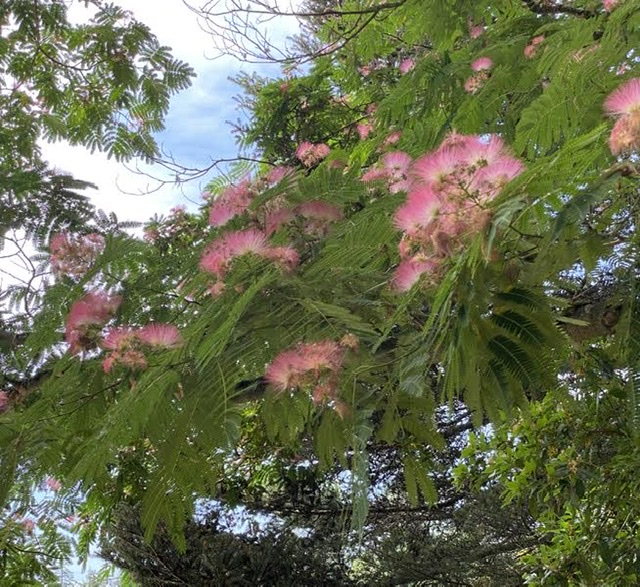
And last is monkey puzzle tree, Araucaria araucana, a conifer. Also known as Chilean pine, this is a dioecious species and the photograph is of a male, identifiable by the two elongated pollen cones at the top of this spiky branch. The immature female cone looks like a fuzzy round ball at the top of the tree. Once mature, the cones on female monkey puzzle trees shed their seed scales (and the seeds nestled inside each scale) one at a time. The seeds—called nuts—are edible.
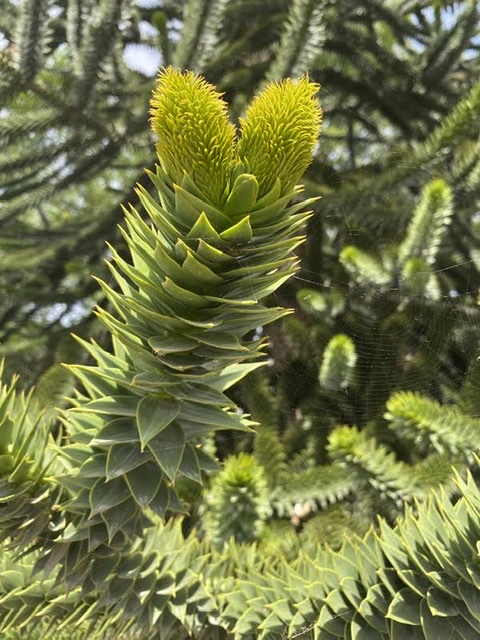
Text and photos Nina S., Vancouver Master Gardener